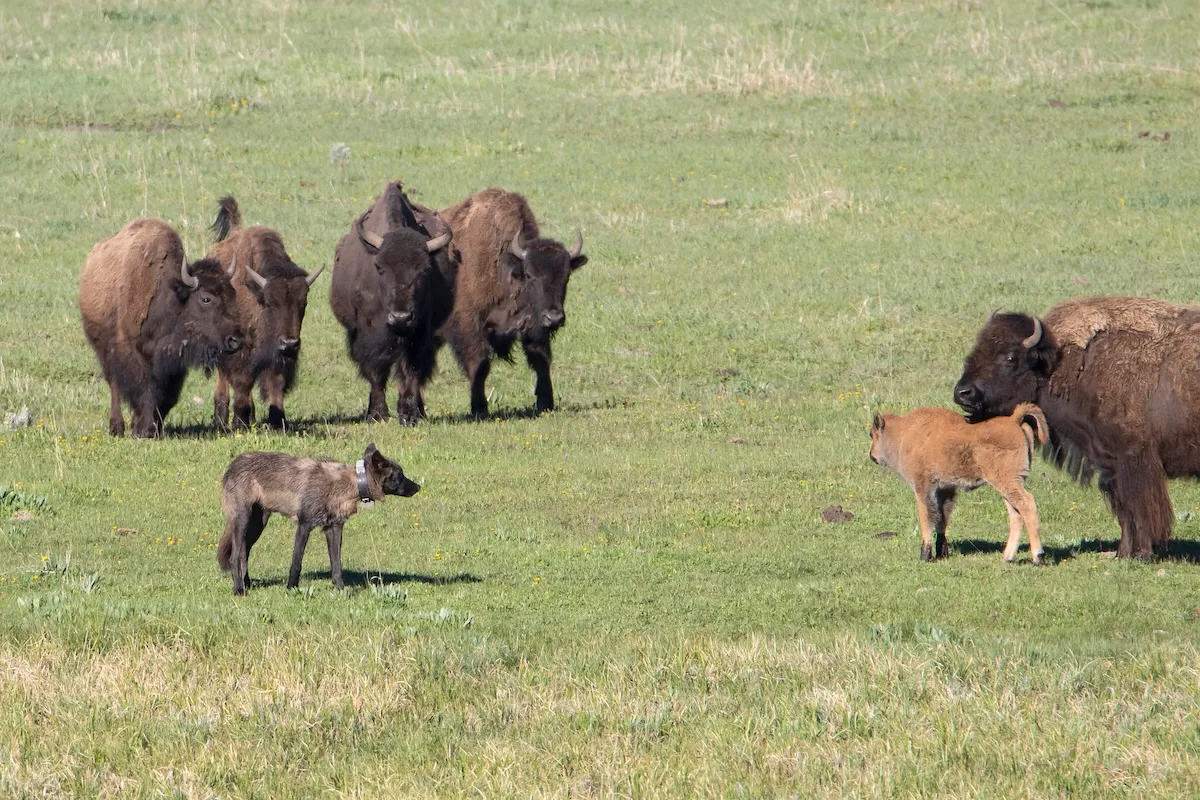

Fall is the perfect time for heading out to the woods to forage for nutritious wild food. Certain foods reach their peak of nutritional value in autumn, making this the best time to pick them.
Videos by Outdoors
Before you forage in any area, know the rules and regulations, including whether foraging is allowed. Some U.S. National Parks allow foraging, while others don’t. Parks, nature preserves, and forests all have their own rules, including what you can forage and how much. Educate yourself on what is local to the area for the best chance of foraging success.
Why Forage in the Fall
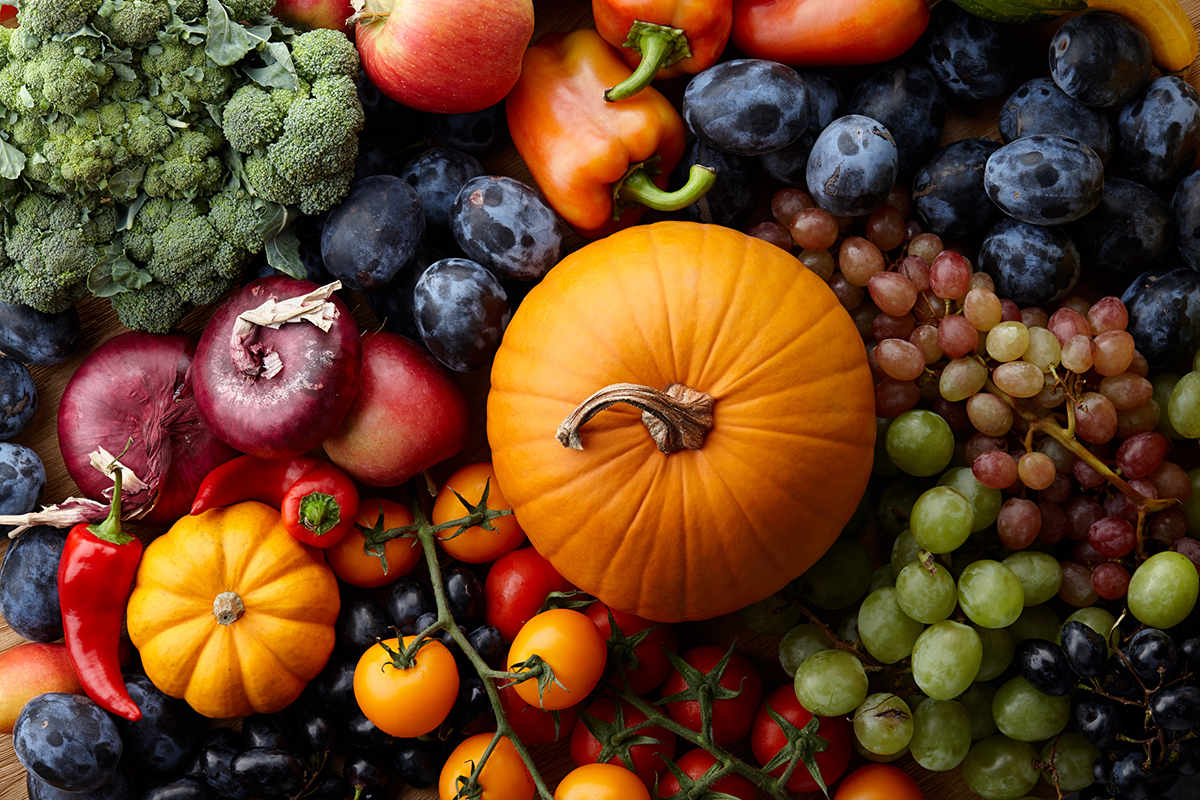
Ahhh, fall—time for cozy sweaters, campfires, and football. Comfort foods rich in flavor and nutritional value are on the menu. Turns out, many food ingredients that warm the body and soul can also be foraged in the fall in the meadows, forests, and fields near you.
At this time of year, you may be fighting squirrels, chipmunks, and other small animals to get to wild foods while they’re in their prime, but there should be plenty to go around. Be sure not to overpick; always leave some behind for animals and to help the long-term health of the plants, trees, and shrubs.
A field guide is a great place to start with your foraging journey. Edible Wild Plants is an excellent overall guide to North America. The universal plant eligibility test is another tool you can use to ensure what you are foraging is safe to eat. Once you find some edibles, learn what to make with them through online foraging cooking classes.
Here are 10 nutritious wild foods to look out for in autumn:
Acorns
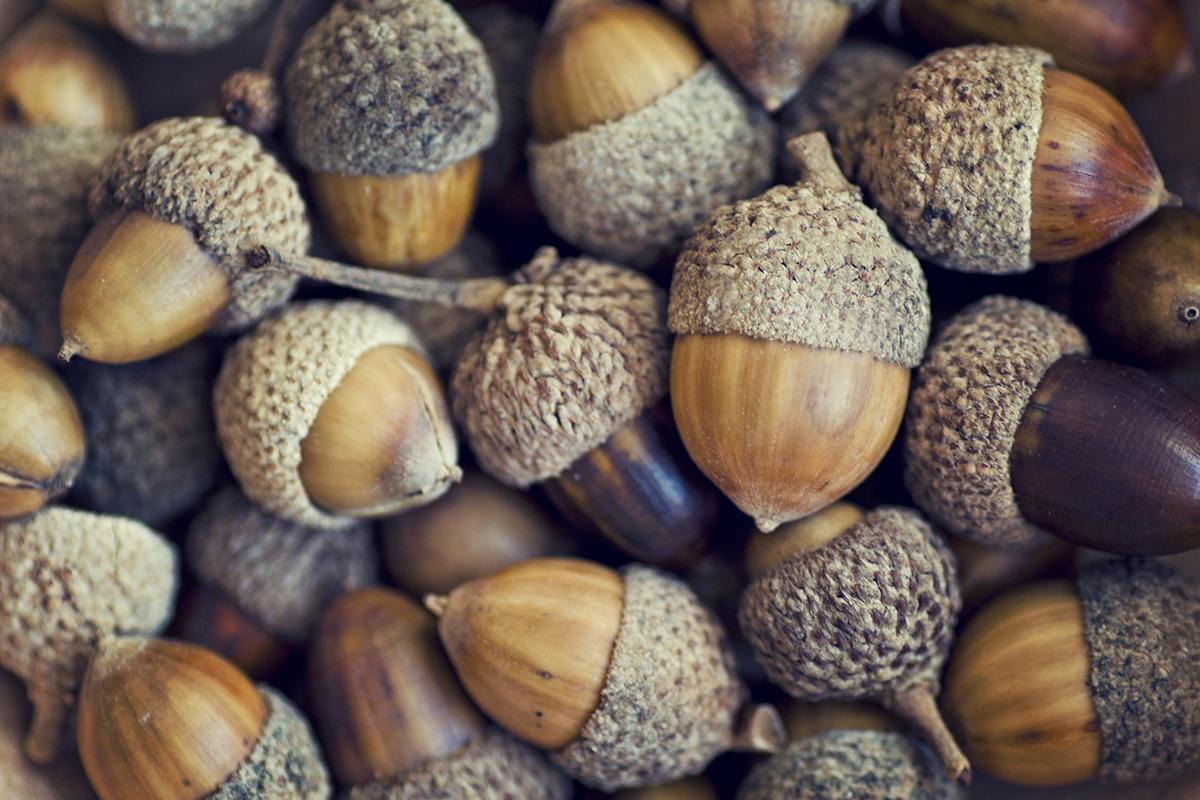
Seeing a squirrel scamper by with one of these nuts in its claws is a sure sign that fall is coming. Acorns come from oak trees that are abundant throughout the United States. While there are many varieties of oak trees, from Gamble to White, all acorns are edible, no matter which type of oak they fall from. This makes acorns one of the easiest nuts to forage for.
Acorns contain starch and fats and are a complete protein. Late September through October is the best time to collect acorns. A mesh bag is best for collecting and storing to keep them from molding. Use the mashed-up fruits of acorns as flour for bread, pancakes, and cookies.
Apples
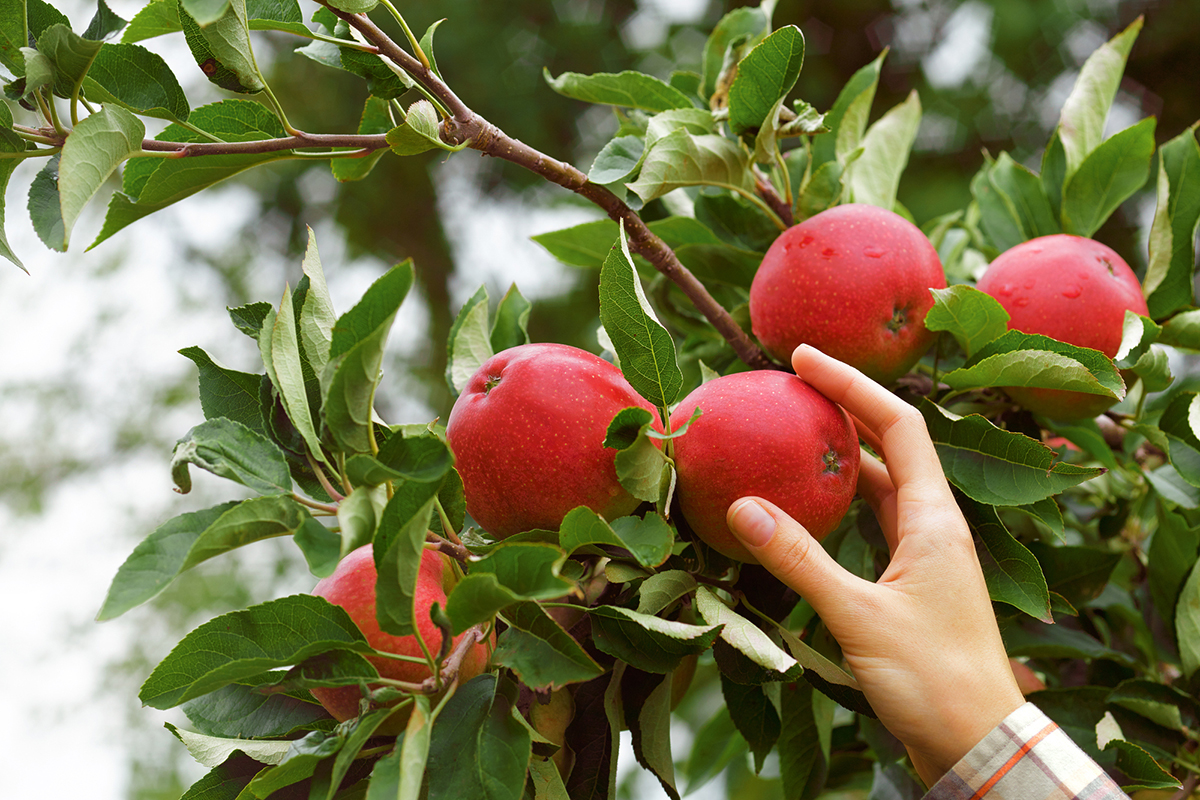
Late summer and autumn are the prime time to forage apples, including crab apples (Malus sylvestris or Malus domestica), but crab apples can also be picked through winter. Apple trees flower in spring and early summer, and then as it turns toward fall, they begin to grow their fruit, and their leaves turn a range of colors—from reddish-purple to yellow-orange.
Wild apples tend to be smaller and more sour than ones you find in a grocery store. Use wild apples, including crab apples, in pies or to make apple butter, applesauce, or apple jam.
Cranberries
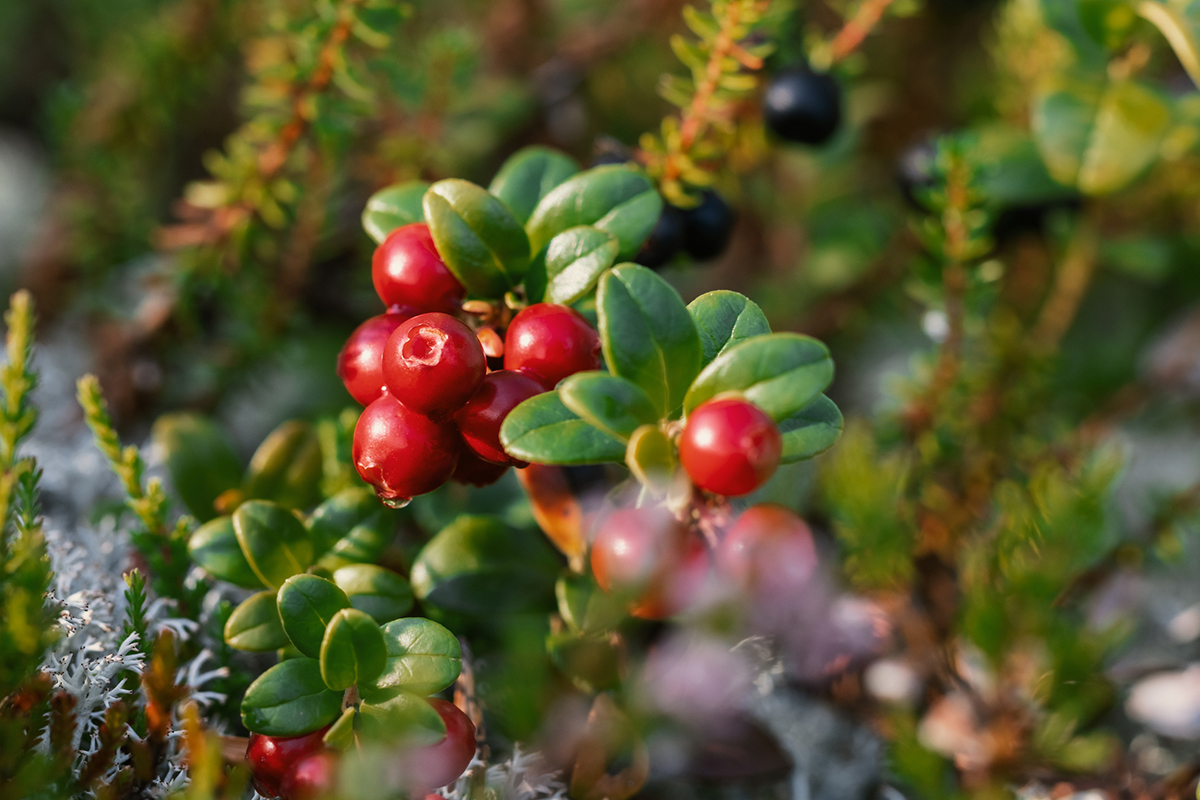
Ripe and prime for picking in September and October, wild cranberries (Vaccinium macrocarpon) grow in Canada and the northeast U.S. through North Carolina and Tennessee. When these oval-shaped berries turn deep red, they are ripe.
In your search, head to the shores of lakes, swamps, wetlands, bogs, and sometimes meadows. Cranberries grow low to the ground on small shrubs with vine-like growth. Leaves look leathery and are oval-shaped. Make this berry into juice or compote, or use it as a sauce for holiday gatherings.
Dandelion Roots
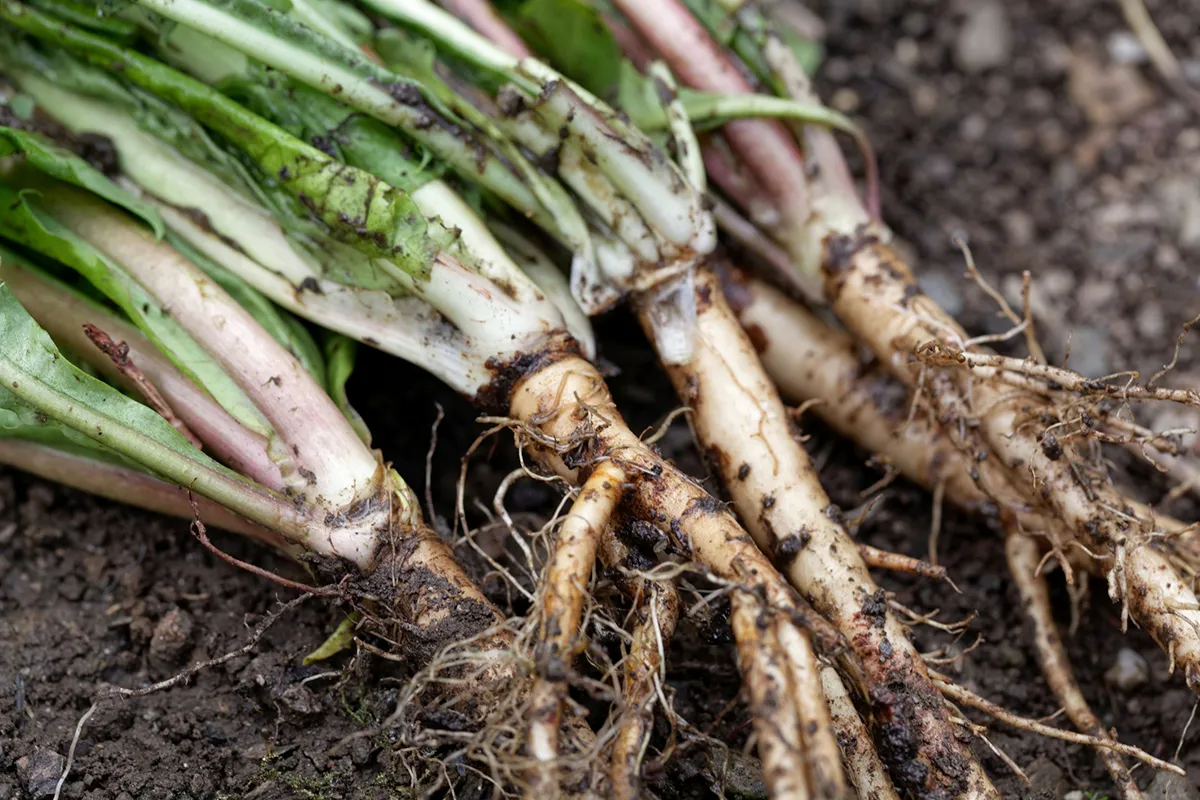
Dandelions (Taraxacum spp.) grow long taproots perfect for picking in the fall. These plants can be found all over the United States. When picking taproots, you want to be sure you aren’t taking them from areas treated with pesticides.
Once the plant starts to die back after a frost, that taproot is ready to be pulled up. The taproot stores all of the plant’s nutrition and medicinal potency, including inulin (insoluble fiber). The roots can be used in a variety of ways. Over-roast them to the point of dryness and put them into tea, roast them in the oven and use them as a side dish like roasted carrots, or throw them into a vegetable soup.
Hackberry
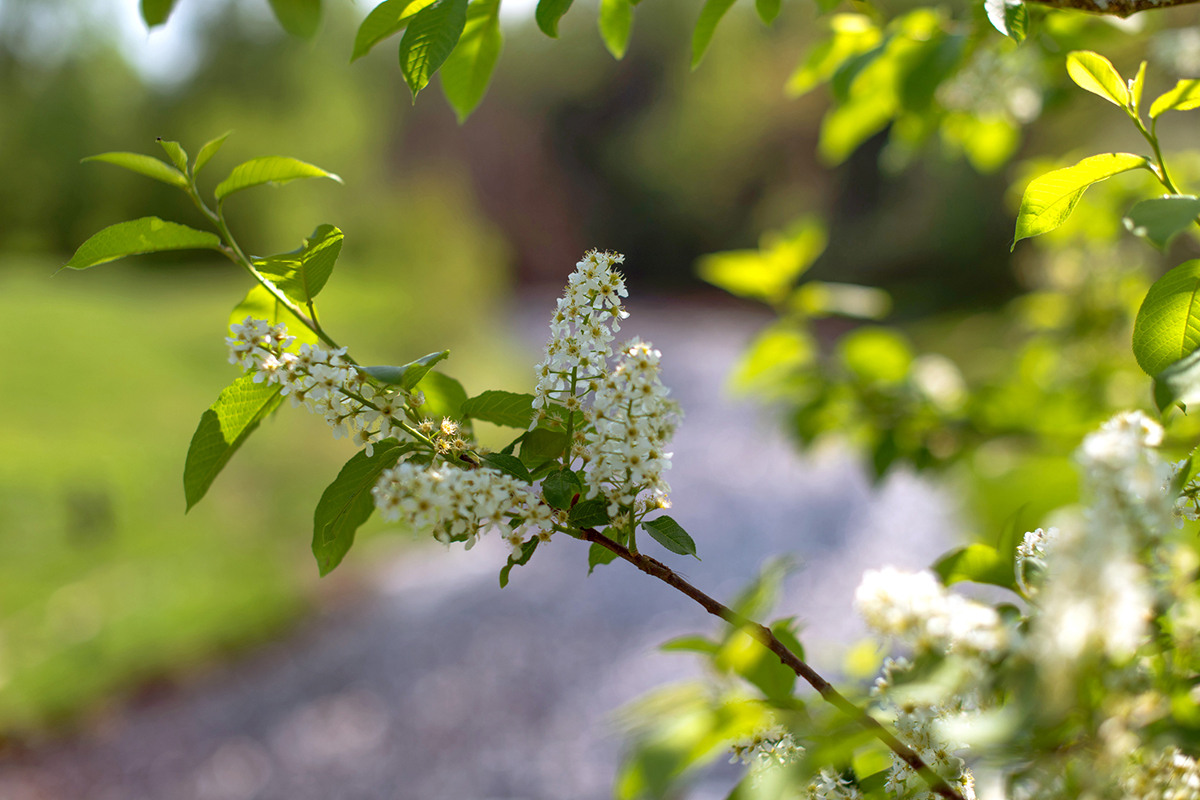
Sweetest in autumn, the hackberry (Celtis occidentalis) can be found in various habitats from open forests to river banks and tree-lined streets. Hackberries grow on trees with smooth gray bark. Warts grow amongst the trunk and base, setting these trees apart. Hackberry leaves resemble elm leaves.
All hackberries are edible. Picking is most effortless when the hackberry tree has lost its leaves. Think of these berries more as a nut full of carbohydrates, protein, and fat. Throw them on cereal, enjoy them in a homemade granola bar, or turn them into milk as a base for many foods. The crunchy and edible seeds are what attract foragers to this fruit.
Persimmons
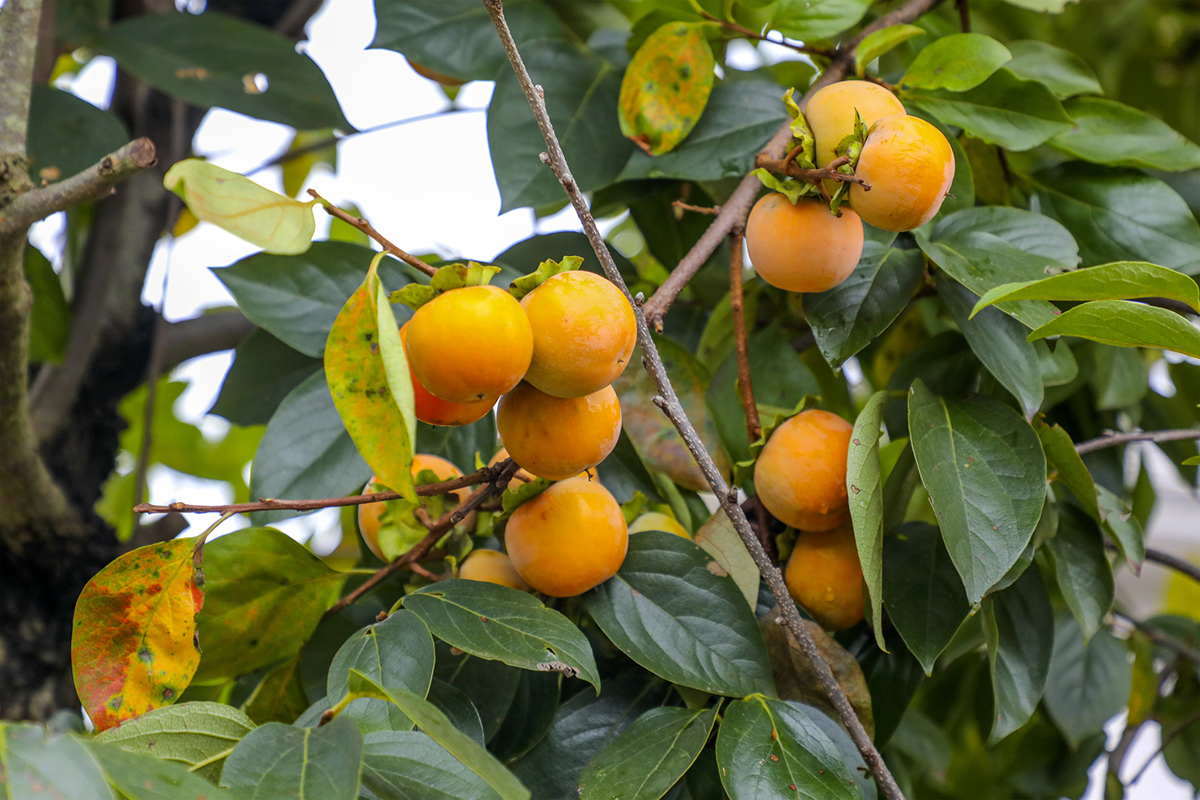
Persimmons (Diospyros) can be found near streams and in fields and forests, especially near maple, hickory, or sycamore trees. Asian and American persimmon trees can grow 40-80 feet tall and are found even on neighborhood streets in New York, Texas, Florida, California, and some Midwestern states like southern Iowa, Indiana, Ohio, and Illinois. The branches of the tree zig-zag, and its leaves are oblong and shiny.
The fruit of this tree ripens in late September through December. Look for wrinkled skin on purple or orange fruit about 2 inches in size. Put this fruit, which is packed with vitamin C, in sauces and jams. Some people enjoy it raw or baked into a dessert like a tart.
Pine Nuts
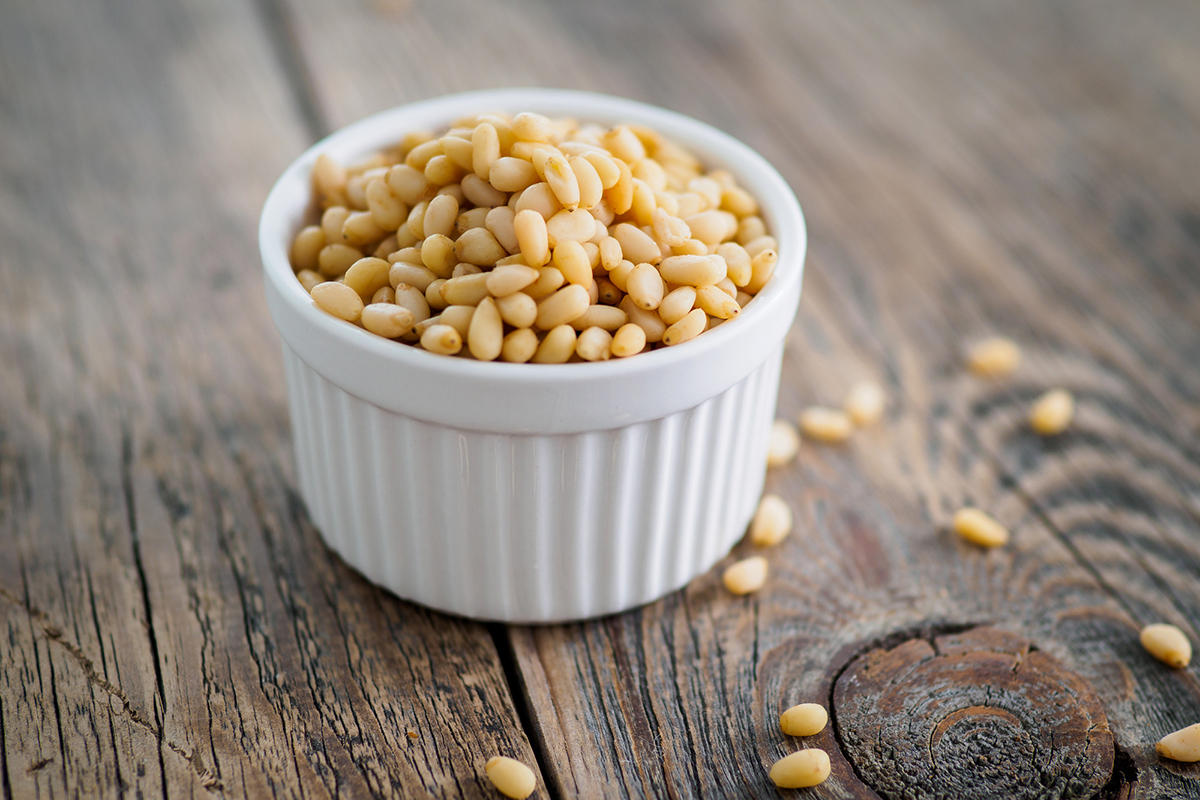
All over the western United States, piñon pines (Pinus edulis and Pinus monophylla) line the landscape, especially in the mountains. These scraggly pines will start to develop green pine cones around August. Come back in early September and grab these green pine cones before they open up. They will open up on their own about three weeks after you pick them.
Foragers appreciate the health benefits of pine nuts, from helping to reduce the risks of heart disease and diabetes to the high levels of vitamin E these nuts contain. Don’t forget the iron, magnesium, and protein as well.
These nuts require a bit more finesse when harvesting and more work upfront. In the shell, they can be frozen for up to two years, making the effort worth it. Pine nuts are great as a salad topper or ground up into cookies. Make pine nut ice cream or use the nuts to make a delicious pesto.
Rose Hips

After the petals fall off of roses, the base of the flower swells, creating a rose hip. When they are red and plump, they are ready for picking, typically in late summer to early winter. They can be found throughout the U.S. in hedgerows, parks, fields, and community gardens. All hips are edible, but the best ones come from wild roses like the Japanese rose and the dog rose.
Rose hips are popular because they are jam-packed with vitamins, including A, C, D, and E. They can be eaten on their own or used to make jams and syrups. If dried, they make a flavorful addition to tea.
Wild Grapes
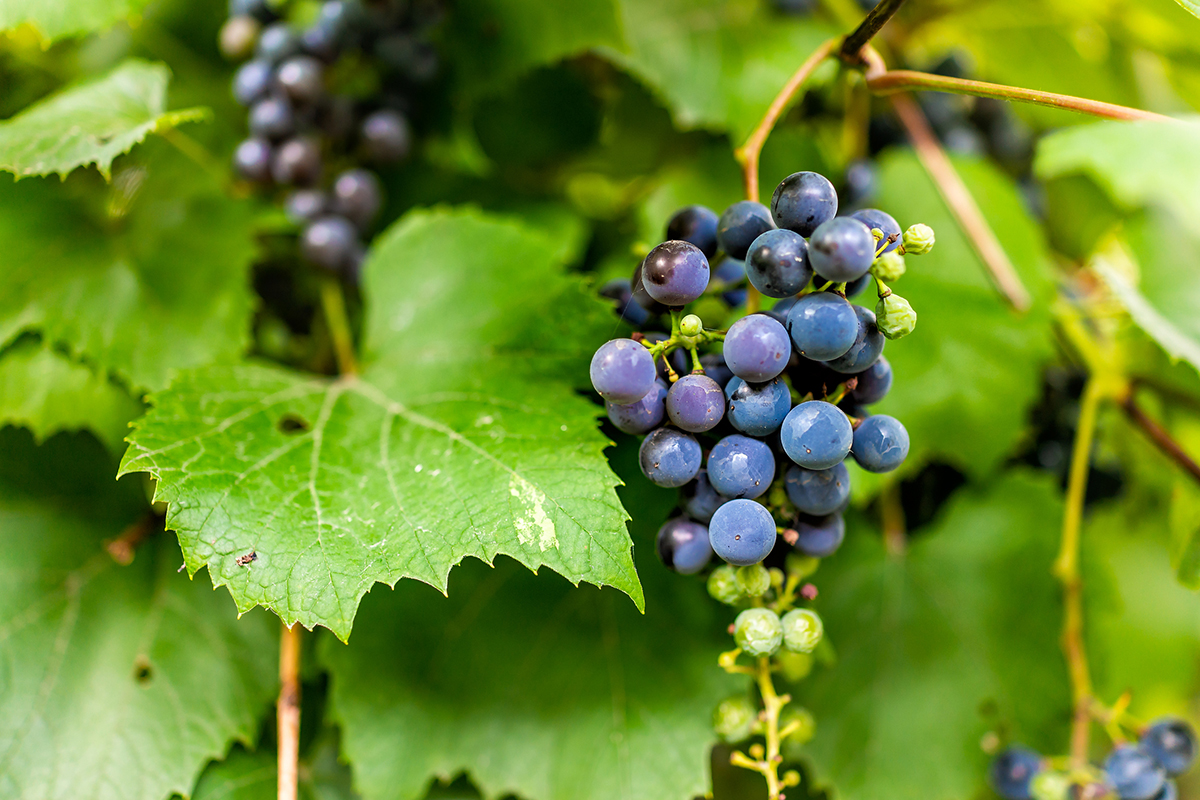
From forests to rivers and even along fences, wild grapes (Vitis riparia) grow all over the United States. While grape varieties can be hard to identify, all wild grapes are edible—and so are the leaves. The only grape lookalike to watch out for is the Canada moonseed. It contains only one crescent-shaped seed, versus grapes with multiple round/oval-shaped seeds. Leaves on a moonseed are not serrated, and the leaf stem attaches under the leaf instead of at the edge.
Wild grapes are best for picking in late August up until the first frost, or maybe even a little bit after. Make sure the grapes are a deep purple and harvest the whole bunch at once. Grape juice and vinegar are some of the many things you can make with this fruit, which is packed with manganese, potassium, and antioxidants. Get your daily intake of vitamins B1, B6, and C by making jam and tarts or substitute it for red wine in any recipe.
Wild Onions and Garlic
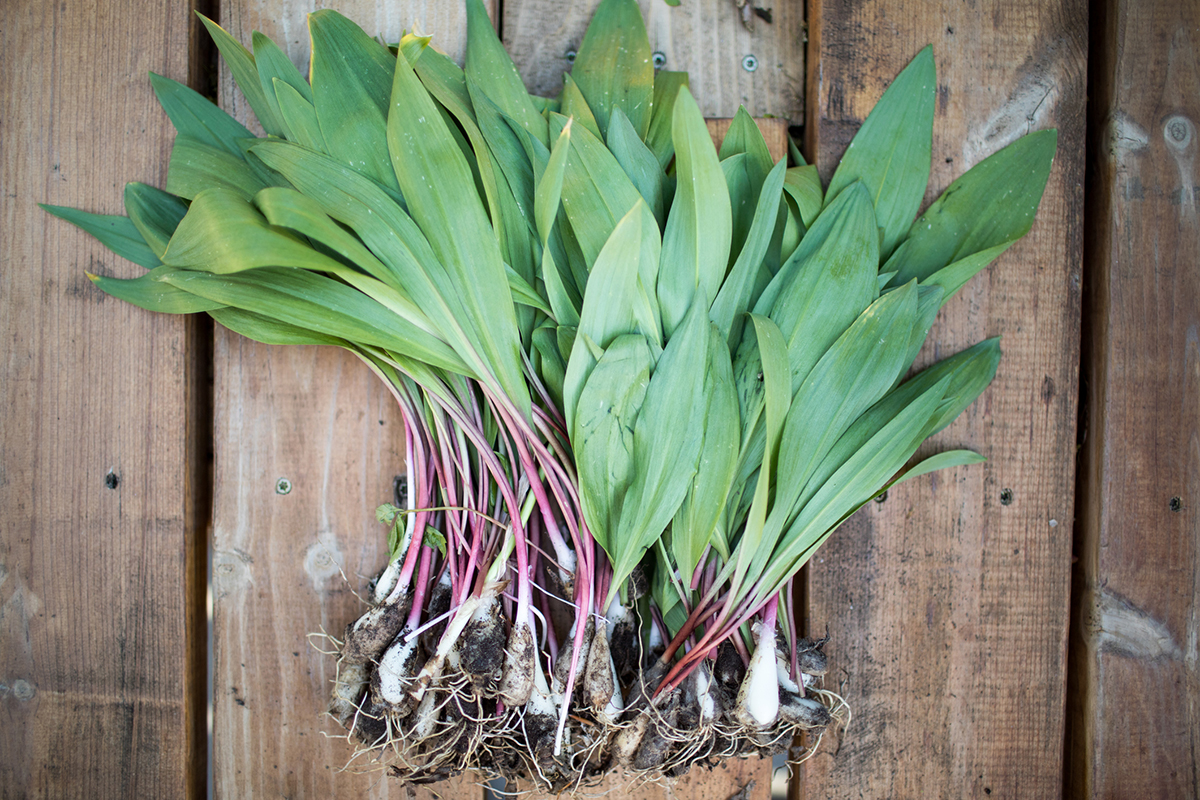
Over a dozen species of wild garlic and wild onions grow in North America. The best place to find wild onions (Allium canadense) is in forests, thickets, and meadows. Wild garlic (Allium vineale L.) is harder to come by, but it is found along the west coast and in the eastern half of the United States—mostly in woodlands.
Wild onions reach about 18 inches tall, while wild garlic reaches 8-12 inches tall. Both have bulbous roots. If you aren’t sure which one you’ve found, you can do a scratch-and-sniff test to smell for those tell-tale odors.
Use these two ingredients to add fresh flavor to your favorite fall foods, such as chili and soup. Both help lower cholesterol, lower blood pressure, and help to reduce the risks of cancer.
Other Foods to Forage in the Fall:
- Berries, including raspberries, blackberries, and elderberries
- Mushrooms
- Nuts, including black walnuts, chestnuts, beachnuts, and butternuts
- Wild carrots (beware toxic lookalikes)
- Sumac leaves and berries
Now that you have some ideas, do some research about which wild edibles you can find in your area. Grab a field guide, your favorite wool hat and hiking boots, and head out to forage your own food this fall. Your wallet, mind, and body will thank you for spending time in nature and for the fresh, organic food.
